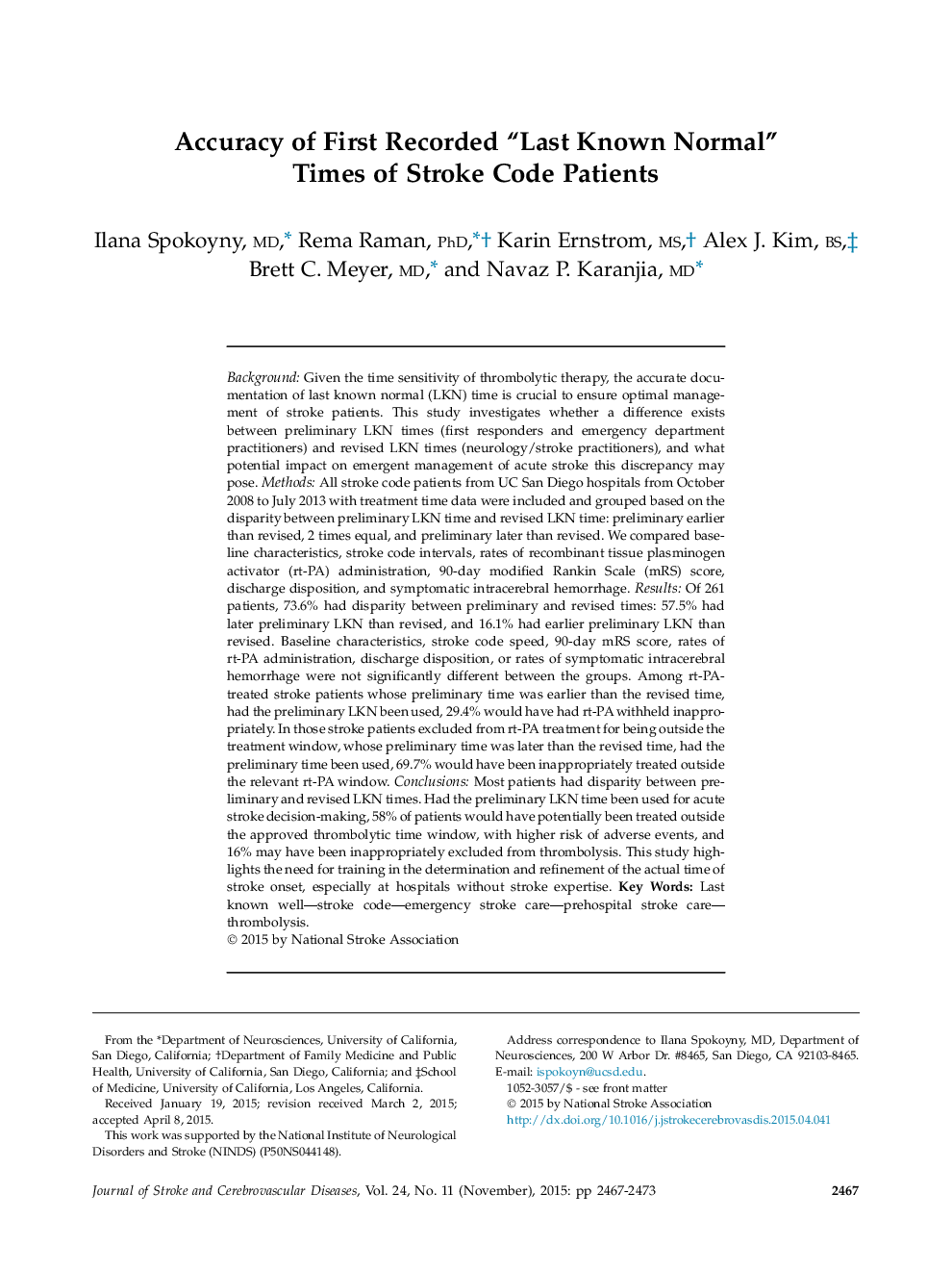| کد مقاله | کد نشریه | سال انتشار | مقاله انگلیسی | نسخه تمام متن |
|---|---|---|---|---|
| 2702413 | 1144536 | 2015 | 7 صفحه PDF | دانلود رایگان |

BackgroundGiven the time sensitivity of thrombolytic therapy, the accurate documentation of last known normal (LKN) time is crucial to ensure optimal management of stroke patients. This study investigates whether a difference exists between preliminary LKN times (first responders and emergency department practitioners) and revised LKN times (neurology/stroke practitioners), and what potential impact on emergent management of acute stroke this discrepancy may pose.MethodsAll stroke code patients from UC San Diego hospitals from October 2008 to July 2013 with treatment time data were included and grouped based on the disparity between preliminary LKN time and revised LKN time: preliminary earlier than revised, 2 times equal, and preliminary later than revised. We compared baseline characteristics, stroke code intervals, rates of recombinant tissue plasminogen activator (rt-PA) administration, 90-day modified Rankin Scale (mRS) score, discharge disposition, and symptomatic intracerebral hemorrhage.ResultsOf 261 patients, 73.6% had disparity between preliminary and revised times: 57.5% had later preliminary LKN than revised, and 16.1% had earlier preliminary LKN than revised. Baseline characteristics, stroke code speed, 90-day mRS score, rates of rt-PA administration, discharge disposition, or rates of symptomatic intracerebral hemorrhage were not significantly different between the groups. Among rt-PA-treated stroke patients whose preliminary time was earlier than the revised time, had the preliminary LKN been used, 29.4% would have had rt-PA withheld inappropriately. In those stroke patients excluded from rt-PA treatment for being outside the treatment window, whose preliminary time was later than the revised time, had the preliminary time been used, 69.7% would have been inappropriately treated outside the relevant rt-PA window.ConclusionsMost patients had disparity between preliminary and revised LKN times. Had the preliminary LKN time been used for acute stroke decision-making, 58% of patients would have potentially been treated outside the approved thrombolytic time window, with higher risk of adverse events, and 16% may have been inappropriately excluded from thrombolysis. This study highlights the need for training in the determination and refinement of the actual time of stroke onset, especially at hospitals without stroke expertise.
Journal: Journal of Stroke and Cerebrovascular Diseases - Volume 24, Issue 11, November 2015, Pages 2467–2473